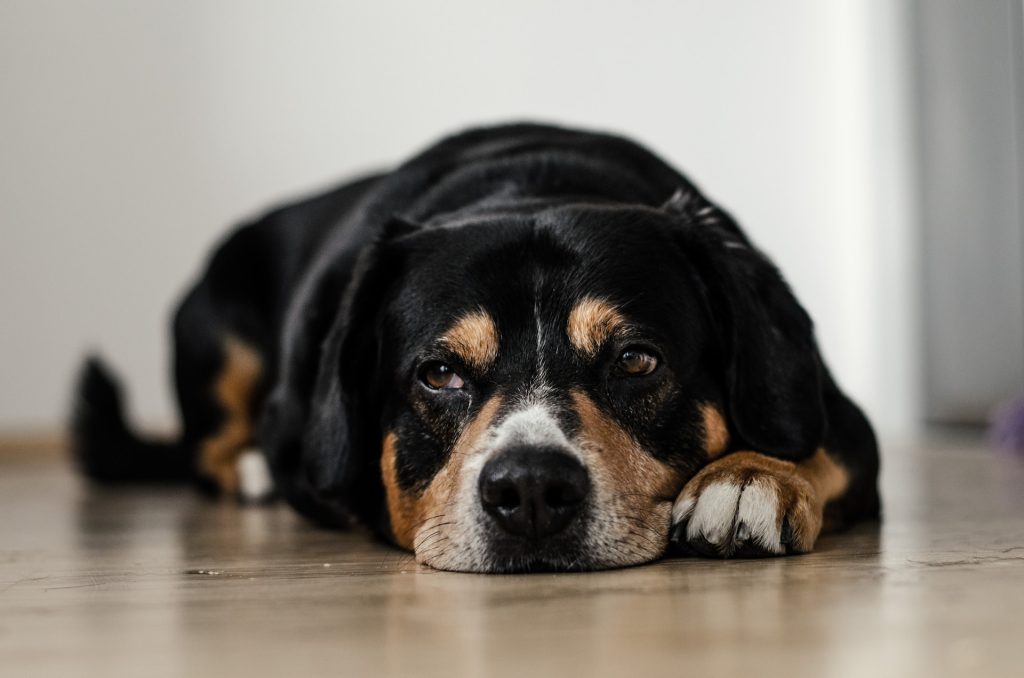
Urinary incontinence is a prevalent issue among dogs. It refers to the involuntary loss of bladder control.
The condition can arise due to several underlying causes, including hormonal imbalances, aging, neurological disorders, anatomical abnormalities, and urinary tract infections. Large-breed, spayed female dogs are more susceptible to urethral incontinence, with estimates suggesting that over 20% of them may be affected.
Although traditional veterinary medicine provides various treatments for urinary incontinence, many pet owners are opting for alternative therapies to alleviate their dog’s symptoms.
In this article, we’ll explore some of the alternative treatments for urinary incontinence in dogs and discuss their potential benefits and drawbacks.
Precautions to Consider Before Opting for Alternative Treatments
It’s essential to keep in mind that not all alternative treatments for urinary incontinence in dogs are created equal, and some may not be suitable for your pet’s specific needs. Before opting for any alternative therapy, it’s crucial to consult with a veterinarian to ensure it is safe and appropriate for your dog.
In addition, it’s always a good idea to have a backup plan in case the alternative treatment does not work or if your dog’s condition worsens. One such backup plan is to keep a medication like Proin for dogs on hand.
PetCareRx, an online retailer of pet care products, states that Proin (phenylpropanolamine) is a medication frequently recommended by veterinarians to address urinary incontinence in dogs. Its mechanism of action involves enhancing the tone of the urethral sphincter, which aids in managing bladder function.
Proin is considered one of the most effective medications for treating urinary incontinence in dogs and is generally safe when used as directed. However, it’s important to note that Proin may have side effects, including increased blood pressure, restlessness, and decreased appetite.
It should only be used under the guidance of a veterinarian, and pet owners should be aware of any potential side effects and monitor their dog’s condition closely.
Alternative Therapies for Dogs
If your dog has been diagnosed with urinary incontinence, here are a few alternative therapies you can consider:
Acupuncture
Acupuncture is a practice originating in China that involves the insertion of thin needles into precise points on the body to stimulate the flow of energy called “Qi.” This therapy has been used for centuries to treat a variety of conditions in both humans and animals, including urinary incontinence.
The theory behind acupuncture is that by stimulating certain points in the body, the body’s natural healing mechanisms are activated, and balance is restored.
Acupuncture may be beneficial in treating urinary incontinence in dogs by strengthening the bladder muscles, improving bladder control, and reducing inflammation in the urinary tract.
While the scientific evidence supporting acupuncture’s efficacy in treating urinary incontinence in dogs is limited, many pet owners report seeing significant improvements in their dog’s symptoms after receiving acupuncture treatment.
Herbal Medicine
Herbal medicine has been used for centuries to treat a wide range of health conditions in both humans and animals. Some herbal remedies may be helpful in managing urinary incontinence in dogs.
For example, herbs such as marshmallow root, uva ursi, and corn silk may help soothe the bladder and urinary tract, reducing inflammation and promoting healing. Other herbs, such as saw palmetto and pumpkin seed, may help support healthy hormone balance, which can be beneficial for dogs with hormone-related urinary incontinence.
While herbal remedies may be effective in managing urinary incontinence in dogs, it’s important to remember that not all herbs are safe for dogs. Some herbs can be toxic and even deadly if ingested, so it’s essential to work with a veterinarian who is knowledgeable about herbal medicine to ensure that the herbs you use are safe and effective for your dog.
Chiropractic Care
Chiropractic care involves manually manipulating the spine and other joints to correct misalignments, improve nerve function, and promote healing. Chiropractic care has been used for decades to treat a variety of health conditions in both humans and animals, including urinary incontinence.
Chiropractic adjustments have shown potential benefits in the treatment of urinary incontinence in dogs by enhancing nerve function in the bladder and alleviating pressure on the spinal cord.
Even though there is insufficient scientific data to validate chiropractic as a definitive solution for urinary incontinence in dogs, many pet owners have claimed substantial progress in their dog’s condition after undergoing chiropractic treatment.
Physical Therapy
Physical therapy involves a range of exercises and techniques designed to improve mobility, strength, and flexibility. Physical therapy can be helpful in managing urinary incontinence in dogs by strengthening the muscles of the pelvic floor and improving bladder control.
Physical therapy techniques such as bladder expression, pelvic floor exercises, and massage may help strengthen the muscles of the bladder and pelvic floor, reducing the risk of accidents and improving your dog’s quality of life.
Homeopathy
Homeopathy is an alternative medicine practice that employs the use of highly diluted substances to activate the body’s natural healing abilities. Homeopathy has been used for centuries to treat a wide range of health conditions in both humans and animals, including urinary incontinence.
Homeopathic remedies for urinary incontinence in dogs may include remedies such as Causticum, Pulsatilla, and Nux vomica, among others. These remedies are believed to help support healthy bladder function, improve bladder control, and reduce inflammation in the urinary tract.
While homeopathy may be effective in managing urinary incontinence in dogs, it’s important to work with a veterinarian who is trained in homeopathy to ensure that the remedies used are safe and effective for your dog.
In Conclusion
Urinary incontinence is a common problem in dogs that can significantly impact their quality of life. While traditional veterinary medicine offers several treatment options for urinary incontinence in dogs, some pet owners are turning to alternative therapies to help manage their dog’s condition.
Alternative treatments may be beneficial in treating urinary incontinence in dogs by improving bladder function, reducing inflammation, and promoting healing.
However, it’s important to remember that these treatments should not be used as a substitute for traditional veterinary care and should only be used under the guidance of a qualified practitioner.







